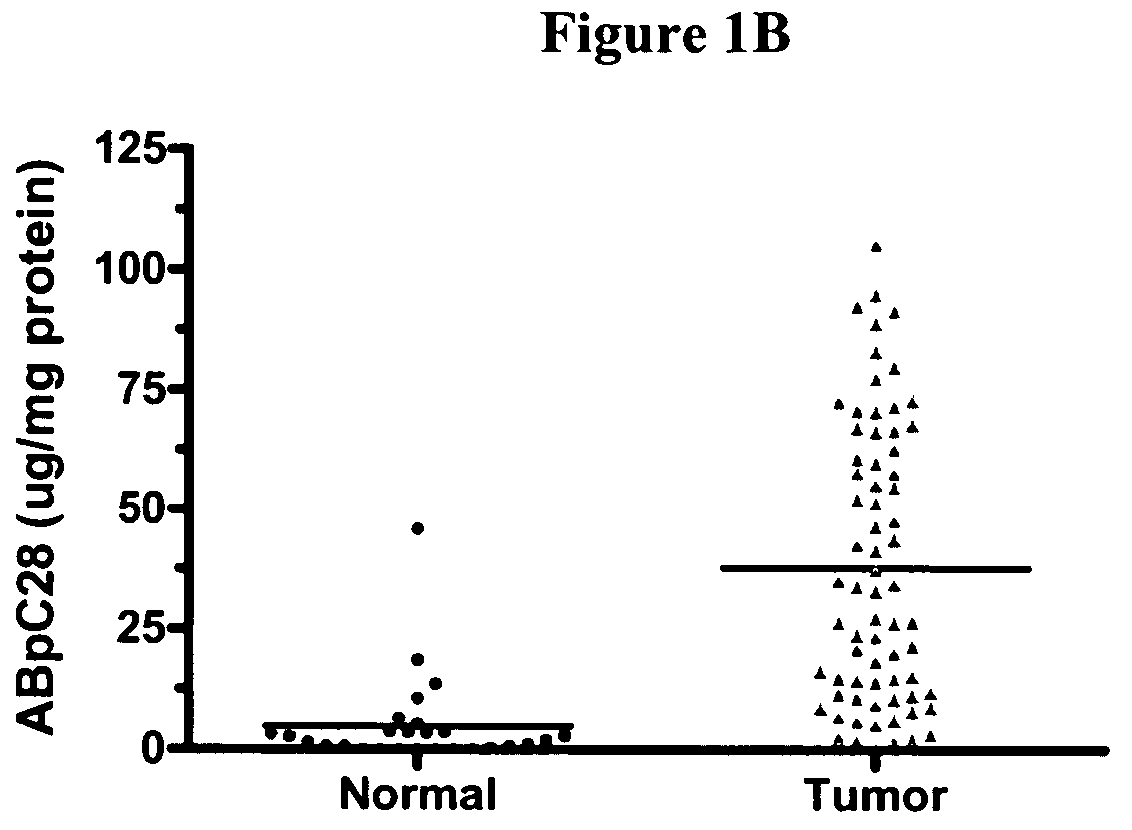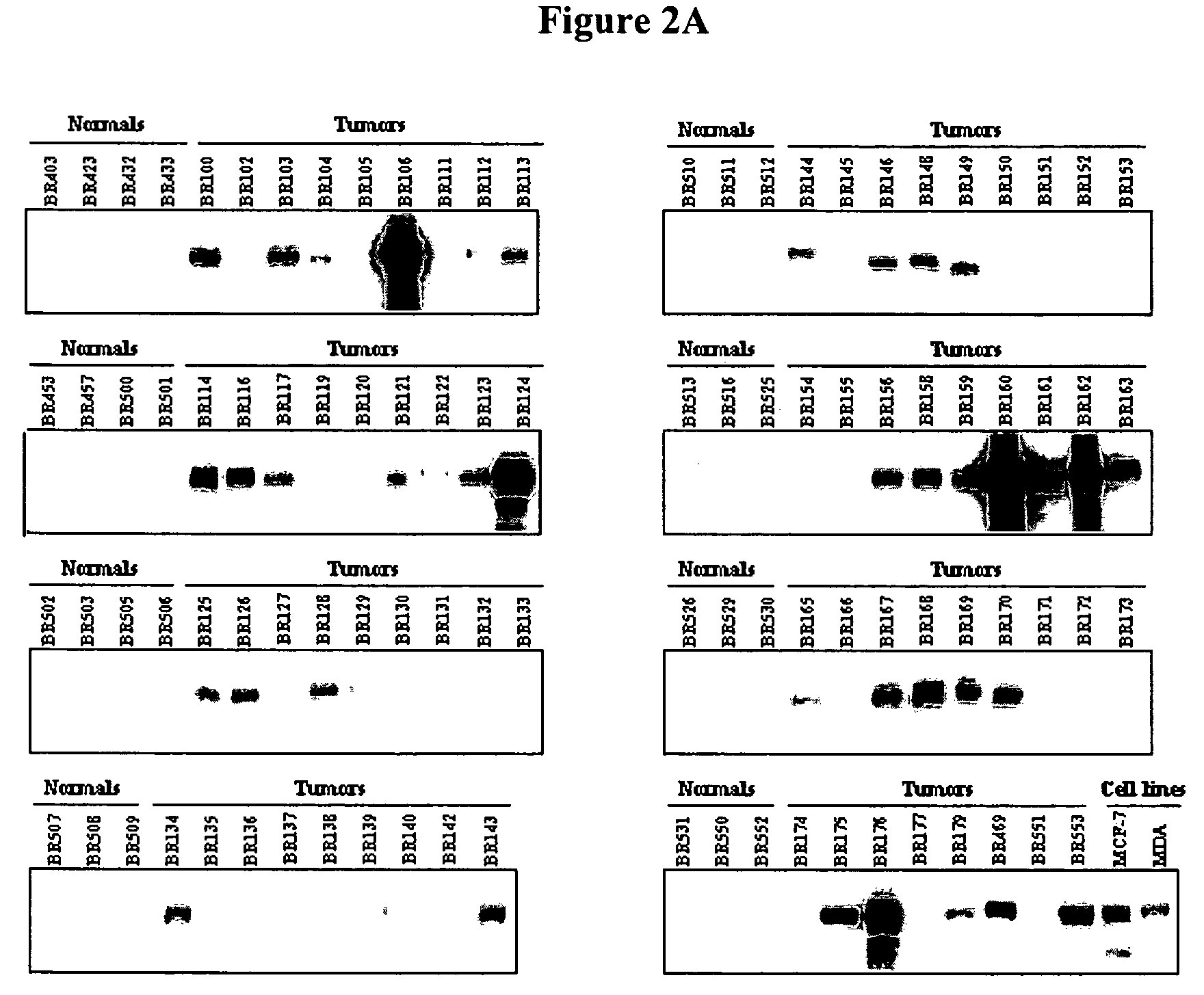Tissue diagnostics for breast cancer
a breast cancer and tissue technology, applied in the field of medicine, can solve the problems of increasing the risk of cancer on the patient's life and wellbeing, affecting the survival rate of patients, and causing 600,000 deaths annually
- Summary
- Abstract
- Description
- Claims
- Application Information
AI Technical Summary
Benefits of technology
Problems solved by technology
Method used
Image
Examples
example 1
Classification of Cell Samples Isolated from Breast Cancer Patients and Normal Breast Subjects
1. Patient Samples and Normal Samples
[0121]Patient material was obtained from Asterand, Inc. (Detroit, Mich.), Clinomics Biosciences, Inc (Watervliet, N.Y.) and Biochain Institute, Inc. (Hayward, Calif.). For the breast cancer groups, only patients with greater than 70% tumor cell content in the tumor mass were included in the studies. Total RNA was extracted from snap frozen tissue samples with the Trizol Reagent kit (Gibco-BRL, Carlsbad, Calif.) using the recommended extraction procedures of Asterand, Inc., Clinomics Biosciences, Inc. or Biochain Institute, Inc. Total RNA was treated with RNA-free DNAse I (New England BioLabs, Beverly, Mass.) and purified with the RNEasy kit (Qiagen, Hilden, Germany). RNA samples were visualized on an Agilent 2100 BioAnalyzer (Agilent Technologies, Foster City, Calif.).
[0122]Each patient included in the study was screened against the same normal total RNA...
example 2
Classification of Cell Samples Isolated from Breast Cancer Patients and Normal Breast Subjects
1. Patient Samples and Normal Samples
[0132]Patient material was obtained from Asterand, Inc. (Detroit, Mich.), Clinomics Biosciences, Inc (Watervliet, N.Y.) and Biochain Institute, Inc. (Hayward, Calif.). Each patient included in the study was screened against the same normal total RNA pool in order to compare them together. The tumor pool comprised 65 samples. The breast normal pool was composed of 26 samples. FIG. 17 shows the patient profiles for individuals diagnosed with breast cancer and individuals belonging to the normal tissue group.
2. ELISA Analysis of Protein Markers in Breast Cancer and Breast Normal Tissues
[0133]Human breast tissues (20-50 mg) were homogenized using a Polytron PT10-35 (Brinkmann, Mississauga, Canada) for 30 seconds at speed setting of 4 in the presence of 300 μl of CelLytic MT Extraction Reagent (Sigma Corp., St. Louis, Mo.) and a cocktail of protease inhibitor...
PUM
| Property | Measurement | Unit |
|---|---|---|
| molecular weight | aaaaa | aaaaa |
| molecular weight | aaaaa | aaaaa |
| molecular weight | aaaaa | aaaaa |
Abstract
Description
Claims
Application Information
 Login to View More
Login to View More - R&D
- Intellectual Property
- Life Sciences
- Materials
- Tech Scout
- Unparalleled Data Quality
- Higher Quality Content
- 60% Fewer Hallucinations
Browse by: Latest US Patents, China's latest patents, Technical Efficacy Thesaurus, Application Domain, Technology Topic, Popular Technical Reports.
© 2025 PatSnap. All rights reserved.Legal|Privacy policy|Modern Slavery Act Transparency Statement|Sitemap|About US| Contact US: help@patsnap.com



